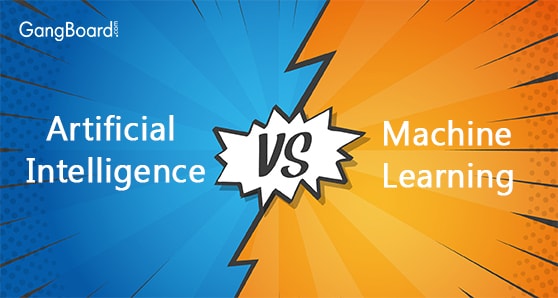
Artificial Intelligence Vs Machine Learning
Artificial Intelligence Vs Machine Learning: Are both same?
You must have definitely heard of the terms – Artificial intelligence, machine learning, deep learning, artificial neural networks, etc. These terms sound pretty synonymous to many of us and if you belong to such tribe, welcome to this post! This post will help you understand what machine learning and artificial intelligence are and by the time you finish reading this blog you will understand why and how they differ from each other.
The Concepts of Artificial Intelligence and Machine Learning
Artificial Intelligence
This is all about creating intelligence in an artificial way. We, as humans, can think, perform, analyse, make an introspection and take a decision and do many more. Artificial intelligence is just the same – but machines do all these instead of humans. In other words, artificial intelligence is all about the machine counterpart of humans.
Machine Learning
The name says it all Machine learning (ML) is all about how machines learn and what they do after that. It’d that dimple. ML is a subset of AI. ML mainly aims to make computers learn by themselves when they face new data, with minimal human supervision. For this they undergo rigorous training through dedicated learning mechanisms.
Digging deeper into AI and ML
Artificial Intelligence
AI is mainly about creating a machine that can think and perform like a human. Experts have classified AI into three different levels:
- Narrow AI: Here a machine can perform a given task better than a human.
- General AI: Here a machine can perform an intellectual task as would a human do.
- Active AI: Here a machine can beat a human in any task.
Currently, we are in narrow AI and moving towards general AI. Techniques such as pattern matching and expert systems are being used now.
It means a machine that has artificial intelligence can do the following things just like a human would:
- Analyse and conclude: Come to a conclusion after analysing the data or situation
- Sense: identifying an object by its senses – touch, see, smell or listen
- Navigate: Move from one place to another
- Language Processing: Grasp and reply clearly to whatever humans speak
- Learn and be creative: Learning from the inputs and using the same whenever required
- Knowledge of the environment: Understanding and staying aware of the surroundings and situations
- Social skills: Get along with others, displaying human emotions
- Planning: Taking decisions and scheduling for future scenarios
Machine Learning
Machine learning mainly involves training machines using many methods and algorithms. Broadly, there are four different training methods for ‘teaching’ what machines should do and how they should learn.
- Supervised learning: The learning process happens in the presence of a teacher and known outcomes.
- Unsupervised learning: The teacher or trainer is absent here, and the machine learns from its own experiences.
- Semi-supervised learning: Here, the machine uses both the taught outcomes and its own experiences.
- Reinforcement learning: The machine improvises its results based on the feedback given.
For understanding machine learning better, let us consider an example. You train a machine to identify which is a cat and which is not based on its features. You train it rigorously by inputting many pictures of cat, tell it what is common among them all and then feed the machine with the pattern for recognizing a cat. Next, when you show the image of a dog and question the machine if it is a cat, the machine would compare the features of the image shown (of the dog), compare it with the patterns stored, classifies accordingly and gives the output as ‘NO’.
Key differences between AI and ML
| Artificial Intelligence | Machine Learning |
| It is a program that gives output similar to human’s. | It is a concept behind the program. |
| AI takes decisions. | ML learns new things and applies it. |
| Aims to simulate human intelligence | Aims to learn as much as possible. |
| Ultimately focuses on intelligence. | Focus mainly on learning and knowledge enhancement. |
| Emphasis’s on getting the tasks done. | Emphasis’s on the accuracy of the task. |
| This is the total system that mimics humans. | This is one of the key concept behind making a machine mimic a human. |
Real time examples for AI and ML
A humanoid robot that would mimic a human in all aspects of thinking, learning and decision making would be a perfect example for Artificial intelligence.
The following examples would help you understand where machine learning finds its practice. Observe that only some the following examples perform only some functionality as designed – like navigation, trend prediction, voice recognition or facial recognition – unlike a full-fledged humanoid robot, that can do all these at a time.
- Personalized recommendations from Netflix, Amazon
- Cab services such as Ola and Uber
- Google camera, photos, and smart reply feature of emails.
- Voice recognition systems such as Cortana, Alexa
Conclusion
Machine learning is a subset of artificial intelligence, which is broader and has wider scope than machine learning. They are intertwined and undoubtedly, the future is bright for both the fields.
Looking for more clarity? Get in touch with the expert team at GangBoard, the no.1 IT Online Training Institute and shape your future in artificial intelligence and machine learning.


 +1 201-949-7520
+1 201-949-7520 +91-9707 240 250
+91-9707 240 250